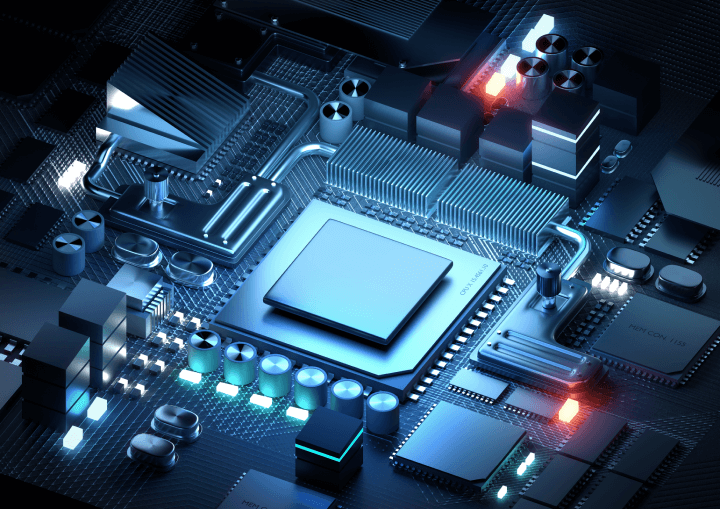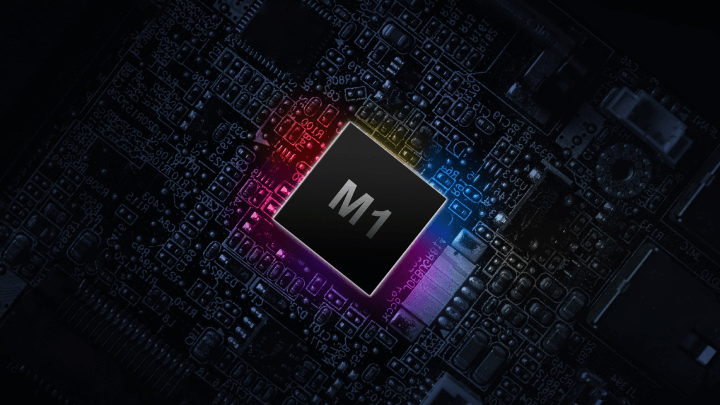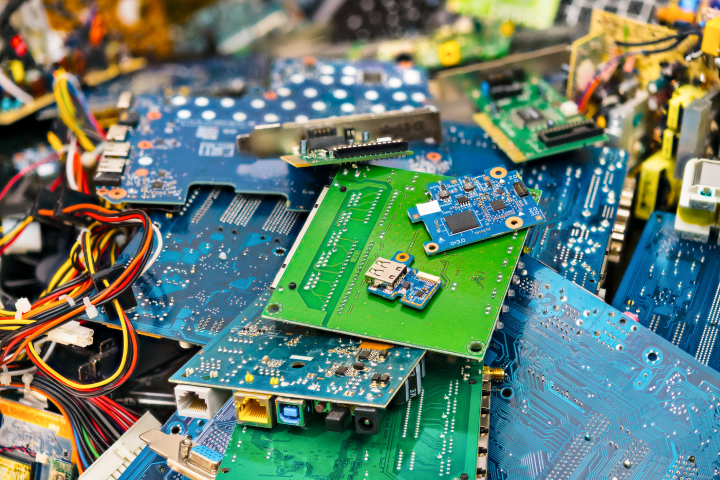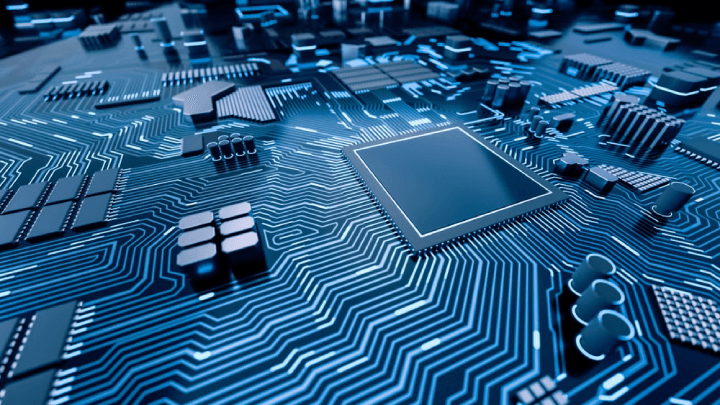The Rise of SoCs & SoMs: A Double-Edged Sword?
Insights | 04-07-2023 | By Robin Mitchell
While SoCs and SoMs have been praised by the engineering community, they do introduce several challenges. Why have SoCs and SoMs become so popular, what challenges do they introduce, and how could engineers work around these issues?
Why have SoCs and SoMs become so popular?
System on Chips (SoCs) and System on Modules (SoM) have become immensely popular amongst engineers over the past decade thanks to their numerous benefits. However, to better understand why these technologies have proven to be so beneficial, we first need to look at how hardware designs have changed.
Before the age of custom chips and advanced packaging technologies, designs would be assembled with discrete components, including capacitors, resistors, and transistors. While this gives designers complete control over their designs, it also makes designs physically large. This isn't particularly an issue for large systems, such as PCs and servers (in fact, it can be rather beneficial as it allows system components to be replaced and upgraded over time).
However, for mobile platforms, trying to squeeze a discrete processor, memory, I/O controllers, and other circuitry onto a tiny PCB presents numerous challenges, including routing and heat dissipation. Furthermore, discrete components will generally consume more energy compared to a single-chip solution, and this can have a serious impact on battery life.
By squeezing multiple system components onto a single chip (i.e., the SoC), not only can significant amounts of space be saved, but energy consumption can also be reduced as unnecessary chip-level peripherals, and circuitry can be eliminated. The reduced space between system components also allows for faster operation due to the shorter distance travelled by signals and the reduction in noise arising from external sources.

Of course, developing a custom SoC is not exactly cheap and requires thousands of engineering hours and millions of dollars in investment. For applications that can afford to sacrifice a portion of their size, SoMs provide engineers with an excellent solution.
By combining multiple dies onto a single substrate, engineers can select the silicon parts that will be used in their design, move them physically close to each other (thereby eliminating the need for large chip packages), and improve performance. While there will be a smaller energy saving, the ability to mix and match chip dies into a custom package gives engineers plenty of freedom.
When taking all of this into consideration, it becomes clear why SoCs and SoMs have prevailed in the engineering community. Their small size allows for designs to be significantly shrunk, thus enabling the development of extremely small devices, and their customizability allows engineers to create application-specific parts that would otherwise be too difficult to do with discrete components. Fundamentally, it is SoCs and SoMs that make modern electronic devices such as laptops, smartphones, and IoT devices possible.
What challenges do SoCs and SoMs present?
While SoCs and SoMS have certainly presented engineers with numerous opportunities, they do come with some challenges.
Hardware Restrictions
One primary issue that SoCs and SoMs face is that they are very often directly soldered into designs, making them difficult to replace. While this has the added advantage that they can be incredibly small and cheap to incorporate, it also leaves little option for upgrades over the long run. As such, devices using such technology can find themselves needing to be completely replaced after a few years of service.
An excellent example of where this has presented issues is the Apple M1 and M2 SoCs. The use of unified memory (whereby the RAM is placed extremely close to the processor) means that access times are far smaller than those experienced by external RAM sticks, thereby improving computing performance. However, as technology progresses, users will eventually need more RAM, and while traditional computers using memory slots allow for such upgrades, the M1 and M2 devices do not allow for this.
This issue with the M1 and M2 is only made worse when considering that these devices are directly soldered to the motherboard, meaning that replacing the entire SoC is also not an option for users. Thus, users of M1 and M2 devices will likely see more device replacements as technology progresses and hardware requirements of software increase.

Apple's M1 and M2 chips are the heart of their latest Mac models. These chips are designed with an 8-core CPU that balances high-performance cores and energy-efficient cores to provide an optimal computing experience. They also feature a unified memory architecture that brings together high-bandwidth, low-latency memory into a single pool, increasing performance and efficiency. The M1 and M2 chips also offer up to 2TB of SSD storage, providing ample space for applications and files.
The MacBook Air and MacBook Pro models powered by the M1 and M2 chips offer a range of features that cater to different user needs. The MacBook Air features a stunning 13.3-inch Retina display, up to 16GB of unified memory, and up to 2TB of SSD storage. On the other hand, the MacBook Pro is available in 14-inch and 16-inch models, with up to 64GB of unified memory and up to 8TB of SSD storage. Both models boast impressive battery life, with the MacBook Air offering up to 18 hours and the MacBook Pro offering up to 21 hours.
As reported by MacRumors, the RAM and SSD in M1 Macs are not user-upgradable, further highlighting the challenges of SoCs and SoMs in terms of upgradability.
e-waste concerns
The inability to upgrade the hardware that is directly soldered to a design from using SoCs and SoMs has a further impact on the environment and the amount of e-waste produced globally. Devices made from discrete parts can readily be taken apart with valuable materials salvaged, but those made from single-chip solutions can prove to be extraordinarily challenging to recycle.

Not only are SoC and SoM designs harder to recycle, but the increased waste, as a result of customers replacing their devices more frequently, can see greater quantities of e-waste produced. While legislation such as RoHS and REACH has helped to eliminate the worst compounds in modern electronics, the use of toxic compounds in chip dies along with trace elements can still introduce a danger to the environment.
According to a report by The Guardian, the semiconductor industry, which includes SoCs and SoMs, has a significant carbon footprint due to its high energy and water consumption, as well as the hazardous waste it produces.
Furthermore, as this waste is often poorly regulated, most of it will end up being shipped to third-world nations where human rights are often violated, impacting the quality of life for those who have to deal with the mountains of e-waste.
Beyond the Mac models, Apple also offers a range of services that enhance the user experience. These include Apple One, a bundled subscription service that provides access to Apple Music, Apple TV Plus, Apple Arcade, and iCloud storage. Apple Pay, a secure and convenient payment service, is also available on Mac models with the M1 and M2 chips. Furthermore, subscribers to Apple News Plus can enjoy a wide range of magazines and leading newspapers, and Apple Arcade offers over 100 ad-free games.
Semiwiki discusses the growing problem of e-waste and suggests potential solutions, such as mechanical disassembly, board and subsystem reuse, and materials extraction and disposal. These solutions could help mitigate the environmental impact of SoCs and SoMs."
Barrier to entry
Another issue faced with SoCs and SoMs is that their benefits are only truly realised when fully customised to their application. While generic off-the-shelf SoCs and SoMs certainly can help improve a design, the lack of complete customisation at the chip level means that unnecessary circuitry will still persist, thereby harming energy consumption. This is why major device manufacturers, such as Apple, have turned to custom SoCs so that every joule of energy can be conserved while simultaneously maximising device performance.
But the high-cost barrier means that smaller engineering teams are often unable to experiment with custom SoCs and SoMs. Therefore, solutions developed using off-the-shelf parts will not be as energy and space efficient as possible, and only large corporations with millions of dollars of funding will be able to take full advantage of SoC and SoM technologies.

Interestingly, despite the integrated design of the M1 and M2 chips, there have been reports of successful upgrades to the RAM and SSD on M1 Macs. Technicians in China have reportedly managed to replace the RAM and SSD modules with larger capacity components, which were correctly recognised by macOS. However, it's important to note that this procedure is extremely challenging and risky, and it undoubtedly voids Apple's warranty. Therefore, while it suggests a degree of flexibility in the M1 Macs, it's not a recommended course of action for most users.
As Semiwiki points out, the high cost of custom SoCs and SoMs can be a barrier to entry for smaller engineering teams. However, research and industry-wide standards cooperation could help change the economics of e-waste and make these technologies more accessible.
How could engineers work around these issues?
With regards to upgradability, the only real solution is to mount SoCs and SoMs onto sockets that allow for future upgradability. While the SoC or SoM itself wouldn’t be upgraded (simply replaced with a better version), the surrounding hardware could still be repurposed, and in the case of smartphones, this surrounding hardware rarely needs to be upgraded (as the real technology change is in the processor itself).
By having socketed designs, e-waste arising from upgrades would also be significantly reduced. In fact, it is possible for older SoCs and SoMs to be repurposed into other devices that don’t require the latest technology to function. For example, a high-end computing system could have its SoC replaced with a newer version containing more memory, but the older SoC that was removed could be mounted into a smaller system, such as a home server or IoT device.
Semiwiki suggests that one potential solution to the upgradability issue is to mount SoCs and SoMs onto sockets that allow for future upgradability. This could not only reduce e-waste but also allow older SoCs and SoMs to be repurposed into other devices.
Overall, SoCs and SoMs present engineers with numerous exciting opportunities, but they are not without their faults. Going forward, engineers will need to consider the long-term effects of hardware that cannot be upgraded, not just on consumers but the environment as well.

